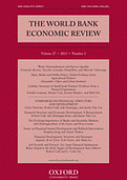Rules of Origin across African Regional Trading Agreements: A Landscape with Measures to Address Challenges at Harmonization
March 15, 2021

de Melo, J. et Portugal-Perez, A. 2013. "Preferential Market Access Design: Evidence and Lessons from African Apparel Exports to the United States and the European Union", World Bank Economic Review, Vol.28 (1), pp. 74 – 98, January 2014